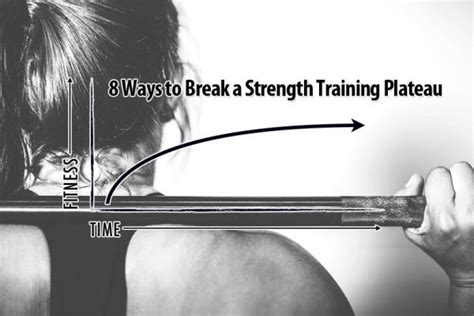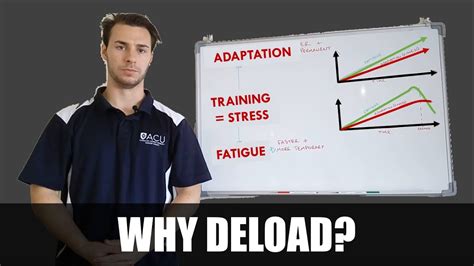Stuck at a strength plateau? What advanced training techniques unlock new performance?

Breaking Through the Wall: Understanding Strength Plateaus
Every dedicated lifter eventually faces it: the dreaded strength plateau. That moment when your numbers stop moving, your progress grinds to a halt, and the weights that once felt challenging now feel insurmountable for any further increase. It’s frustrating, demotivating, and can make you question your entire training approach. But a plateau isn’t a dead end; it’s an invitation to evolve your training.
While consistent progressive overload is the cornerstone of long-term strength gains, the body is an incredibly adaptive machine. Eventually, it becomes accustomed to standard stimuli, demanding a more sophisticated approach to force further adaptation. This is where advanced training techniques come into play, offering novel stressors that can shock your muscles into new growth and strength.

Why Do We Hit Strength Plateaus?
Before diving into solutions, understanding the ‘why’ is crucial. Plateaus often stem from a combination of factors:
- Lack of Novel Stimulus: Your body has fully adapted to your current training volume, intensity, and frequency.
- Overtraining/Under-recovery: Pushing too hard without adequate rest, nutrition, and sleep can lead to fatigue accumulation and hinder progress.
- Inadequate Nutrition: Not consuming enough calories or macronutrients to support muscle repair and growth.
- Poor Technique: Form breakdown as you try to lift heavier, leading to inefficient movement patterns.
- Mental Fatigue: The grind of the same routine can lead to a lack of focus and motivation.
Advanced Techniques to Reignite Your Progress
If you’ve optimized the basics (consistency, nutrition, recovery, proper form), and still find yourself stuck, it’s time to introduce some advanced tools to your arsenal.
1. Periodization: Strategic Variation
Periodization involves strategically varying your training volume, intensity, and exercise selection over planned cycles to optimize performance and prevent overtraining. Instead of randomly changing things, periodization introduces structure:
- Linear Periodization: Gradually increases intensity while decreasing volume over time (e.g., starting with high reps/low weight, moving to low reps/high weight).
- Undulating Periodization (Daily/Weekly): Varies training parameters more frequently (e.g., a heavy day, a moderate day, and a light day within the same week). This keeps the body guessing and prevents adaptation.
2. Intensification Methods: Pushing Beyond Limits
These techniques allow you to extend a set beyond typical muscular failure, maximizing muscle fiber recruitment.
- Drop Sets: Perform a set to failure, then immediately reduce the weight by 20-30% and continue for more reps to failure. Repeat 1-2 times.
- Rest-Pause Training: Perform a set to failure, rest for a short period (10-20 seconds), then perform a few more reps with the same weight. Repeat for 2-3 mini-sets.
- Cluster Sets: Break a heavy set into mini-sets with short rest periods (10-30 seconds) in between. For example, instead of 1×5, do 5×1 with 20 seconds rest between singles. This allows for more quality reps with heavier loads.
- Supersets/Giant Sets: Performing two or more exercises back-to-back with minimal rest. Supersets typically involve two exercises (either opposing muscle groups or the same muscle group), while giant sets involve three or more.

3. Overcoming Isometrics and Partial Reps
Overcoming Isometrics: Pushing or pulling against an immovable object (like a power rack pin) at a specific joint angle for 5-10 seconds. This generates maximal force at that angle, strengthening weak points in your lift.
Partial Reps: Performing only a portion of a movement (e.g., the top half of a squat). This allows you to overload the muscles with supra-maximal weight in a specific range of motion, improving strength at that specific point.
4. Plyometrics and Explosive Training
While often associated with power athletes, incorporating explosive movements like box jumps, clap push-ups, or medicine ball throws can significantly improve your central nervous system’s ability to recruit muscle fibers quickly and powerfully. This translates to increased strength in your primary lifts.

5. Deloading: The Art of Strategic Retreat
Sometimes, the best way to move forward is to take a step back. A deload involves intentionally reducing training volume and/or intensity for a week (e.g., 50-70% of usual volume/intensity). This allows your body to recover fully, repair tissues, and adapt to the previous training stress, leading to a phenomenon known as supercompensation, where you come back stronger.
6. Training to Failure and Beyond
While not for every session, occasionally pushing a set to absolute muscular failure (where you cannot complete another rep with good form) can be a powerful stimulus. Beyond failure techniques, such as forced reps (with a spotter’s help) or negative reps (only performing the eccentric phase with a heavier weight), can take this a step further, but require extreme caution and a spotter.

Integrating Advanced Techniques Safely
These techniques are potent tools, not to be overused. Pick one or two to integrate into your routine for a specific cycle (e.g., 4-6 weeks), rather than attempting to use them all simultaneously. Listen to your body, prioritize perfect form, and ensure adequate recovery, nutrition, and sleep. Advanced techniques put a higher demand on your body, so your recovery game needs to be on point.
Consistency, Nutrition, and Recovery: The Foundation
No advanced technique can compensate for a lack of foundational training principles. Consistency in your workouts, a nutrient-dense diet supporting your goals, and ample sleep are non-negotiable for strength gains. Think of advanced techniques as accelerants, not substitutes, for these core elements.

Conclusion: Your Path to Unlocked Potential
Hitting a strength plateau is a rite of passage, not a roadblock. By strategically applying advanced training techniques like periodization, intensification methods, and even strategic deloads, you can break free from stagnation and unlock new levels of strength and muscle development. Approach these methods thoughtfully, prioritize safety, and remain committed to your long-term fitness journey. The next PR is waiting.







